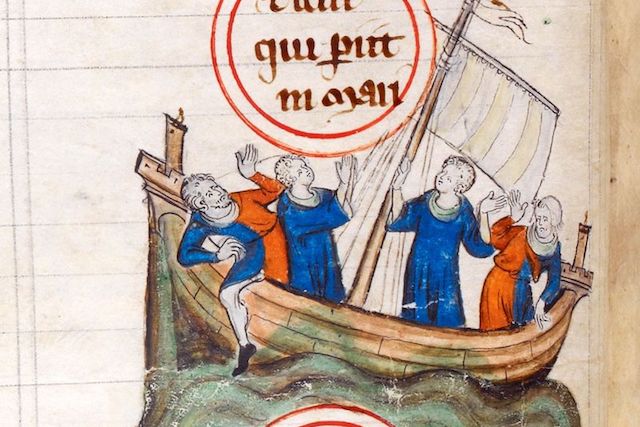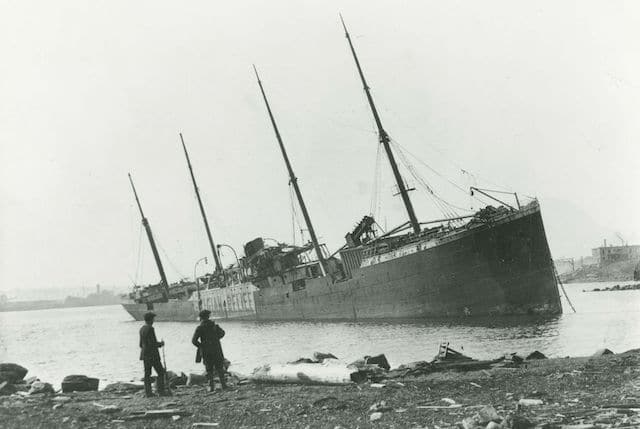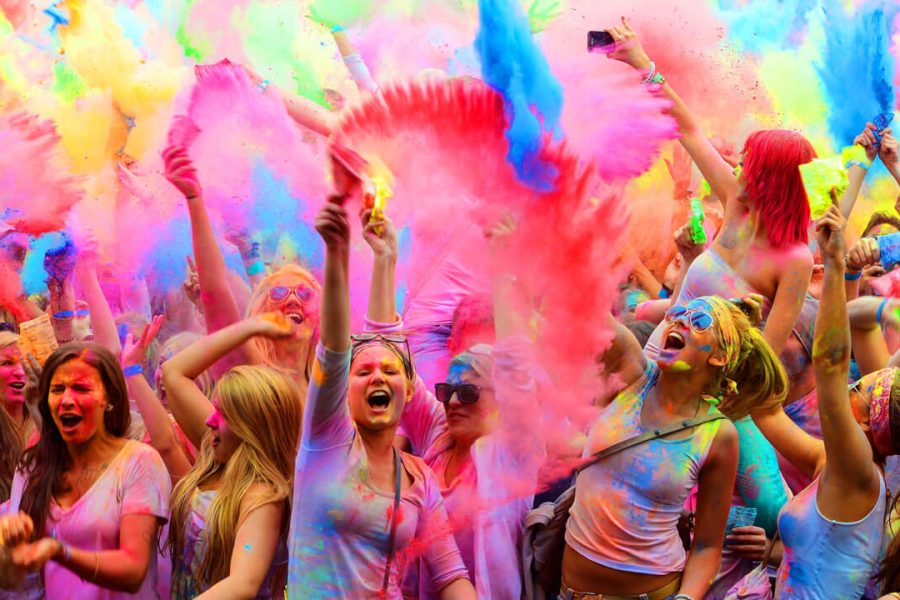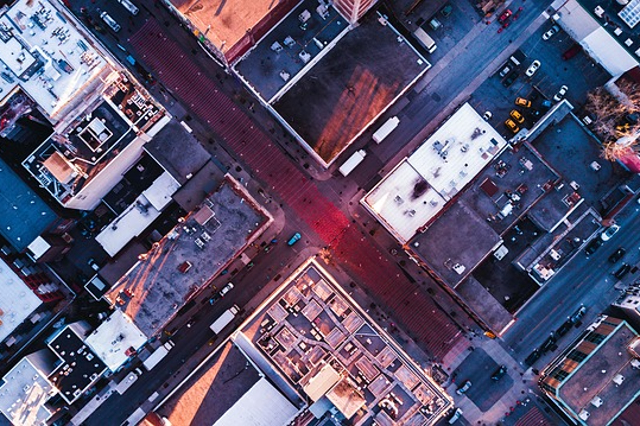The sea is a cruel mistress. This is a poetic way of saying that life on the open water can be quite treacherous, even fatal, as you are about to see.
They are not in any particular order, as some of them have disputed casualty figures, and we also do not mention combat encounters when ships were sunk in battle. However, here are the worst naval disasters in history.
10. Doña Paz
As we said, the list is not in order, so we might as well start with the deadliest maritime disaster ever recorded in peacetime, the passenger ferry MV Doña Paz, built in Japan and registered in the Philippines.
On the morning of December 20, 1987, the ship left the island in the Philippines and headed for the capital Manila. That same night Doña Paz collided with oil tanker MT Vector , which had more than a million liters of gasoline on board. The collision caused a massive fire that quickly spread to Doña Paz and found most of the passengers completely in the dark. Only 25 people managed to get out alive.
It was already one of the worst maritime tragedies in history, but as the investigation into the disaster continued, things only got worse. The official capacity of the Donja Pass" The ship's passenger capacity was around 1,500, but it soon became apparent that the actual number of people on board was much, much higher. Since it was the Christmas season, many more tickets were sold illegally, and small children did not need tickets at all, so none of them appeared on the manifest.
The grim estimate of the true death toll continued to grow, eventually topping 4,000. It wasn't until 1999 that a task force was able to tally up all the victims of the disaster. Doña Paz , the number of which reached 4386 people.
9. Kiangya

Before the flooding "Doña Paz "The unfortunate distinction of "worst peacetime maritime disaster" went to the Chinese passenger steamer SS Kiangya On December 3, 1948, the ship was traveling up the Huangpu River near Shanghai when it struck a mine left over from World War II, likely laid there by the Imperial Japanese Navy.
As well as Doña Paz , Kiangya was carrying far more passengers than its official capacity of 1,186, most of whom were refugees desperate to find safety during the Chinese Civil War. However, the true scale of the casualties on board Kiangya remains uncertain to this day. The manifest listed 2,150 passengers on the ship, but there may have been as many as stowaways on board. Nearly 1,000 people were rescued by other ships, but the death toll still includes 3,920.
8. White ship

Sometimes the true scale of a natural disaster is not immediately quantifiable. When the White Ship sank in the English Channel in 1120, around 300 people died, and while the loss of life was significant, it pales in comparison to other entries on this list. However, the disaster had far-reaching consequences, as one of those killed aboard the White Ship was William the Ætheling, the 17-year-old Duke of Normandy and heir to the English throne.
It was only 50 years after William the Conqueror had defeated the Anglo-Saxons in battle and become the first Norman king of England. Tensions were still high between the two sides, so the next Norman king, Henry I, married Queen Matilda of Scots, a woman related to both the Scottish and Anglo-Saxon royal lines. They hoped that their own offspring would be of both Norman and Anglo-Saxon blood, and would satisfy both sides. But that offspring was none other than William the Ætheling, and all plans for a peaceful succession collapsed with the White Ship. What followed was a civil war between England and Normandy, known as the Anarchy, that lasted 15 years and caused far more pain and suffering, with a significantly higher death toll.
7. Princess Alice

On September 3, 1878, between 600 and 700 people died in England when the passenger paddle steamer SSPrincess Alice collided with a cargo ship Bywell Castle , as both were crossing the Thames. Subsequent investigations found both ships to be responsible for the sinking, and the tragedy led to new rules and regulations regarding shipping on the Thames.
It became the worst disaster on Britain's inland waterways, an unfortunate record that still stands, but the manner in which these unfortunate souls perished made it truly one of the worst maritime tragedies. The fact that the Thames was a heavily polluted and rotten river was well known, but " Princess Alice" sank in an area called Gallion Reach, right between two sewers that had just dumped thousands of tons of raw sewage into the water.
One survivor described the experience: “Both the taste and smell were something horrible… – going down to the bottom and coming up again with my mouth full, I could form a very good idea of it – it was the most horrible water I had ever seen or tasted…”
6. Titanic and Taiping

It is not surprising that "Titanic" will end up somewhere on this list. On April 10, 1912, the British passenger liner set sail from Southampton on its maiden voyage, bound for New York City. On April 15, it sank after hitting an iceberg, and because there were only enough lifeboats on board for half the passengers and crew, more than 1,500 people died in the tragedy.
But you already know most of what you need to know about Titanic , so instead let's mention a steamship in Asia that suffered a similar fate: Taiping . It is sometimes called the "Titanic of the Orient" because it had a similar death toll - more than 1,500 passengers and crew died on January 27, 1949, when the Taiping sank after colliding with a smaller cargo ship.
As well as Kiangya , Taiping was sailing during the Chinese Civil War, when thousands of refugees from mainland China were desperately trying to reach Taiwan. It was supposed to carry around 500 passengers, but the ship had over 1,500 people on board and was sailing silently at night without lights, trying to reach Keelung Harbor in Taiwan without alerting the Communist authorities. Unfortunately, this also meant that other ships couldn't see it, so it collided with Chienyuan , taking all but 37 passengers to a watery grave.
5. Sultana
Ironically, the worst maritime disaster to hit the United States is now somewhat overlooked, even though the death toll may have reached 1,800.
It was a wooden steamer. "Sultana" , built in 1863 to transport cotton along the Mississippi River. However, due to the American Civil War, it was primarily used to transport troops, and although its official capacity was only 376 people, it regularly traveled with over 2,000 people on board.
When "Sultana" set out on its fateful voyage on the morning of April 27, 1865, with perhaps as many as 2,300 passengers and crew members on board, most of them recently released Union prisoners of war. They thought they had finally achieved freedom, but their hopes soon turned to horror when three of the Sultana's four boilers exploded , causing the wooden ship to catch fire. Estimates vary, but between 1,000 and 1,800 people died in the ensuing chaos.
As for why the tragedy is little known today, historians point to information overload for Americans. On April 9, the Civil War effectively ended when General Lee signed a ceasefire. Five days later, President Lincoln was assassinated by John Wilkes Booth. It was a tense month for America, so the Sultana tragedy Not made such an impression on her as at other times.
4. Convoy of graves

In early April 1782, the Battle of the Saintes was fought between the British and French in the West Indies, off the coast of Dominica. Technically part of the American Revolution, it was actually part of a much longer conflict between England and France, with the two powers vying for naval supremacy in the Caribbean. The battle was a resounding victory for England, which not only re-established its dominance in the area, but also captured four ships of the line as prizes, including the French flagship Ville de Paris .
Admiral Thomas Graves was appointed to command this new fleet, but he was short of work. Obviously, since all the ships had just been in action, they needed repairs, but there were no suitable shipyards in the West Indies, so the only option was to sail back to England.
On September 16, 1782, the fleet was caught in a deadly hurricane. All but one of the French prizes were destroyed, as were two British ships and several merchant ships that had joined the fleet. It is estimated that over 3,000 sailors, soldiers, passengers and prisoners of war perished.
3. Le Jula

It has become standard practice to compare any modern maritime disaster with "Titanic" , because that's what everyone has heard of. So it's no surprise that Africa has its own version Titanica : Le Joola .
On September 26, 2002, the Senegalese ferry MVLe Joola capsized off the coast of Gambia, taking with it more than 1,850 people and leaving only 64 survivors. As was often the case with such tragedies, the ship was heavily overloaded when it sank, with nearly four times as many people on board as it could hold. Another contributing factor may have been carelessness, as the ferry was sailing in rough seas when it was only intended for coastal waters.
In the aftermath of the tragedy, the Senegalese government faced heavy criticism for evading prosecution and refusing international assistance to excavate the wreckage in an effort to sweep the incident under the rug as quickly as possible.
2. Halifax Explosion

Now we will look at one maritime disaster that caused the largest man-made atomic explosion, and what made it truly horrific was that the explosion occurred not somewhere in the middle of the ocean, but very close to the Halifax Harbor in Nova Scotia, completely destroying a large part of the city.
On the morning of December 6, 1917, the SS Mont Blanc and SS Imo wanted to pass each other through the Narrows, the channel that connected the harbour with Bedford Basin. Unfortunately, due to inattention, the two vessels collided at low speed. Normally, this in itself would not be the worst thing in the world, but " Mont Blanc" was a French cargo ship filled to the brim with TNT and other flammable substances. The collision caused the barrels of benzene to capsize and sink the ship. The fuel vapors were soon ignited by sparks, and " Mont Blanc" caught fire.
Unfortunately for the people of Halifax, none of them knew about the dangerous cargo on board the ship, and they flocked to the streets and their windows to watch the giant flames. About fifteen minutes later, the explosives detonated, instantly killing about 1,600 people. The giant explosion also caused a tsunami that reached the nearby town of Dartmouth. In total, just under 2,000 people died in the Halifax explosion, while thousands of buildings were destroyed and people were injured or left homeless.
1. Kamikaze

Let's end with what may have been the deadliest maritime disaster in history: the storm that sank the Mongol fleet. We say "maybe" because it happened 750 years ago, and the Mongols weren't very good at keeping records, so it's hard to get exact figures.
According to legend, in 1274, Kublai Khan assembled a fleet of hundreds of ships and 30,000 to 40,000 men and sailed across the sea to invade Japan. A typhoon struck his forces off the island of Kyushu and destroyed about a third of his fleet. That was between 10,000 and 13,000 casualties right there, but that turned out to be just the beginning, because the real disaster didn’t happen until nearly a decade later, when the Mongols tried again.
In 1281, Kublai Khan was ready for another invasion. He assembled one of the largest naval forces in history, consisting of over 4,000 ships and 140,000 men, and attempted an invasion on a grand scale, the likes of which the world had never seen. Of course, no one could stand against the might of the Mongol Empire.
But once again, as it approached Japan, the fleet was besieged by a powerful typhoon that completely decimated its numbers. At least half of the soldiers died, and many of the survivors who managed to reach the shore were killed by the Japanese army. In total, up to 100,000 Mongols may have died at sea trying to subjugate Japan, and the two typhoons that saved their island became known in Japanese lore as the "divine winds" or kamikazes.













Оставить Комментарий